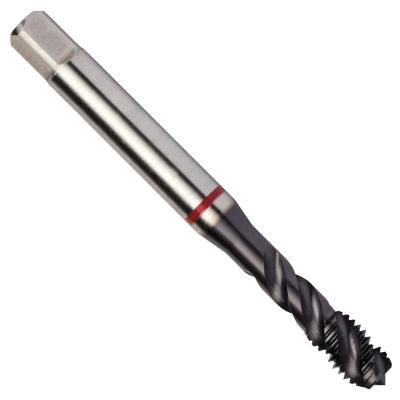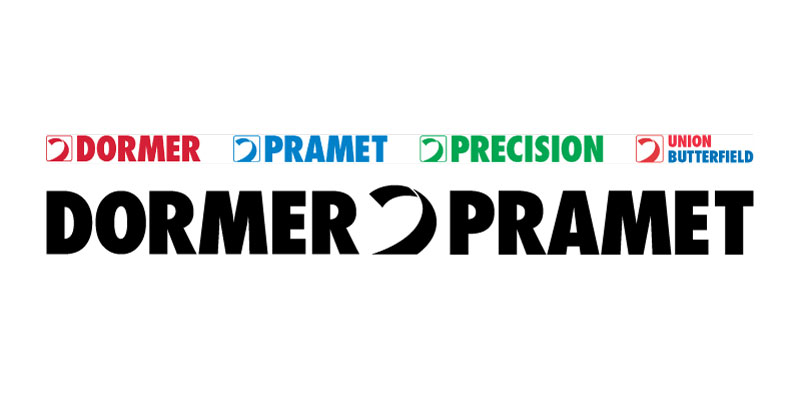
When a large new vessel is put to sea, it usually is equipped with a tunnel thruster (or bow thruster), which acts as a side propeller system to allow for additional maneuverability of the ship at berth and on open sea. Using tunnel thrusters, captains have increased control and can turn around a ship on a dime, raising ship’s efficiency.
Brunvoll AS is a global manufacturer of seaworthy motion systems with headquarters in the Norwegian Sea. The company has supplied more than 8,000 complete side propeller systems mounted on more than 5,000 different cruise ships, supply boats and navy vessels.
Brunvoll’s offer consists of five different types of tunnel thrusters, where each variant is available in a variety of sizes with a diameter which varies between 3 to 10 feet and with one engine power of between 150 to 4,500 hp.
“In a normal year we deliver about 350 tunnel thrusters in different variants,” says Roy Unhjem, machine tool maintenance lead at Brunvoll. “In addition to the standard variant, we have a tunnel thruster with extra shock absorption. It reduces sound and vibration and is mainly sold to cruise ships. The actual tunnel thrusters - besides software and control systems – are manufactured in three different materials. The outside of the tunnel which surrounds the propeller is made of steel sheets, cut, rolled and welded. The housing is cast iron. The rotor plug and propeller blade are case in an alloy of nickel, aluminum and bronze. In extreme cases, we have needed to produce components in acid-proof steel.
The machining of the propeller is conducted mostly unmanned and at night due to the fragile and brittle nature of the nickel-aluminum bronze alloy. This demands very well-functioning manufacturing processes and tools.
The new Dormer Red Shark is a threaded tap designed for use specifically with steel alloys. The versatility of the Red Shark tap allows for it to be used in different dimensions and at different torques, for example, for threading the propeller at the attachment to the rotor.
The Red Shark increases tapping ability and service life, providing users with reliability and tool economy at high cutting speeds. Brunvoll drove the Red Shark up to 164 feet/minute. It was assessed that optimal cutting in the nickel-aluminum bronze was at 115 feet/minute. To ensure optimal productivity and safety, the unmanned machines at night are lowered to the cutting speed of 82 feet/minute. In any of the speeds, the Red Shark took a bite out of tapping.
Besides the additional productivity of the Red Shark, it offers the flexible to be used with other materials other than just steel alloy.
Contact Details
Related Glossary Terms
- alloys
alloys
Substances having metallic properties and being composed of two or more chemical elements of which at least one is a metal.
- cutting speed
cutting speed
Tangential velocity on the surface of the tool or workpiece at the cutting interface. The formula for cutting speed (sfm) is tool diameter 5 0.26 5 spindle speed (rpm). The formula for feed per tooth (fpt) is table feed (ipm)/number of flutes/spindle speed (rpm). The formula for spindle speed (rpm) is cutting speed (sfm) 5 3.82/tool diameter. The formula for table feed (ipm) is feed per tooth (ftp) 5 number of tool flutes 5 spindle speed (rpm).
- tap
tap
Cylindrical tool that cuts internal threads and has flutes to remove chips and carry tapping fluid to the point of cut. Normally used on a drill press or tapping machine but also may be operated manually. See tapping.
- tapping
tapping
Machining operation in which a tap, with teeth on its periphery, cuts internal threads in a predrilled hole having a smaller diameter than the tap diameter. Threads are formed by a combined rotary and axial-relative motion between tap and workpiece. See tap.
- threading
threading
Process of both external (e.g., thread milling) and internal (e.g., tapping, thread milling) cutting, turning and rolling of threads into particular material. Standardized specifications are available to determine the desired results of the threading process. Numerous thread-series designations are written for specific applications. Threading often is performed on a lathe. Specifications such as thread height are critical in determining the strength of the threads. The material used is taken into consideration in determining the expected results of any particular application for that threaded piece. In external threading, a calculated depth is required as well as a particular angle to the cut. To perform internal threading, the exact diameter to bore the hole is critical before threading. The threads are distinguished from one another by the amount of tolerance and/or allowance that is specified. See turning.

